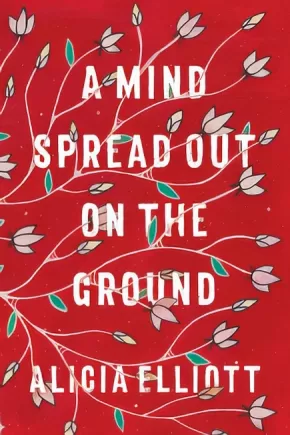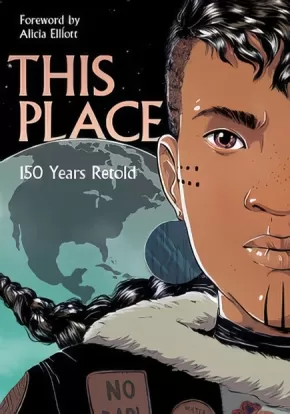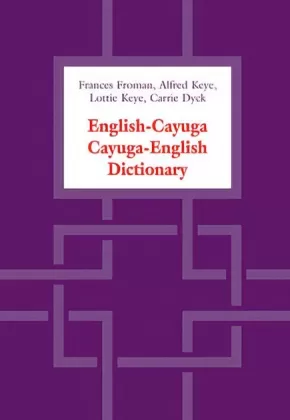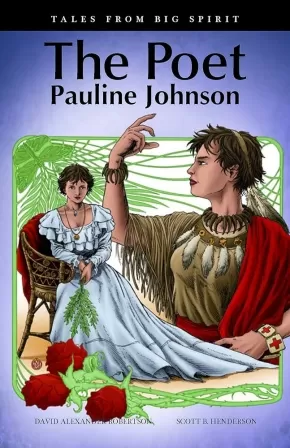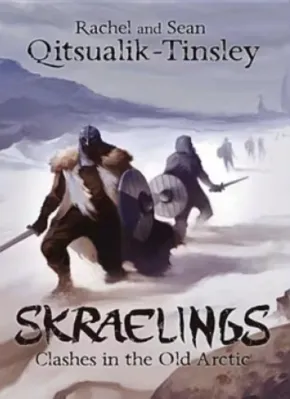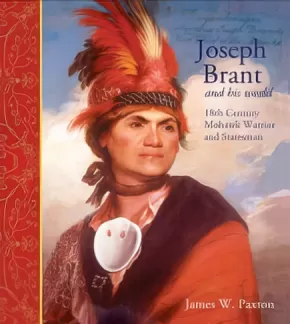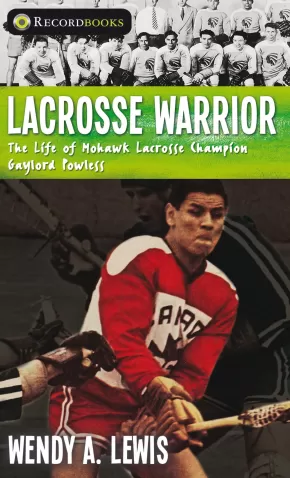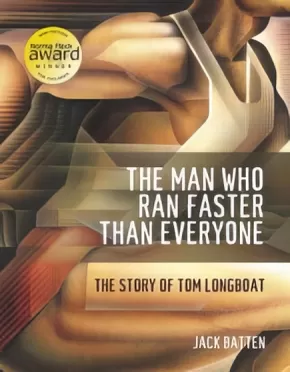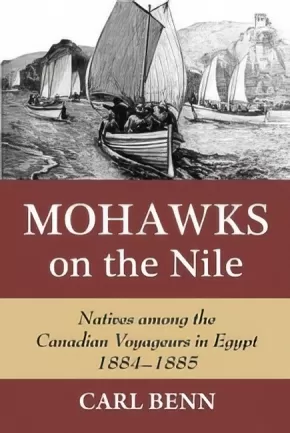
Haudenosaunee (Iroquois)
31
-
40
of
40 Results;
Sort By
Go To
of 3
A Mind Spread Out on the Ground
$21.00
Format:
Paperback
Text Content Territories:
Indigenous Canadian; First Nations; Haudenosaunee (Iroquois);
Grade Levels: 12; University/College;
ISBN / Barcode: 9780385692403
Synopsis:
Synopsis:
A bold and profound work by Haudenosaunee writer Alicia Elliott, A Mind Spread Out on the Ground is a personal and critical meditation on trauma, legacy, oppression and racism in North America.
In an urgent and visceral work that asks essential questions about the treatment of Native people in North America while drawing on intimate details of her own life and experience with intergenerational trauma, Alicia Elliott offers indispensable insight and understanding to the ongoing legacy of colonialism. What are the links between depression, colonialism and loss of language--both figurative and literal? How does white privilege operate in different contexts? How do we navigate the painful contours of mental illness in loved ones without turning them into their sickness? How does colonialism operate on the level of literary criticism?
A Mind Spread Out on the Ground is Alicia Elliott's attempt to answer these questions and more. In the process, she engages with such wide-ranging topics as race, parenthood, love, mental illness, poverty, sexual assault, gentrification, writing and representation. Elliott makes connections both large and small between the past and present, the personal and political--from overcoming a years-long history with head lice to the way Native writers are treated within the Canadian literary industry; her unplanned teenage pregnancy to the history of dark matter and how it relates to racism in the court system; her childhood diet of Kraft dinner to how systematic oppression is linked to depression in Native communities. With deep consideration and searing prose, Elliott extends far beyond her own experiences to provide a candid look at our past, an illuminating portrait of our present and a powerful tool for a better future.
Reviews
"This book is hard, vital medicine. It is a dance of survival and cultural resurgence. Above all, it is breathtakingly contemporary Indigenous philosophy, in which the street is also part of the land, and the very act of thinking is conditioned by struggles for justice and well-being." —Warren Cariou, author of Lake of the Prairies
"These essays are of fiercest intelligence and courageous revelation. Here, colonialism and poverty are not only social urgencies, but violence felt and fought in the raw of the everyday, in embodied life and intimate relations. This is a stunning, vital triumph of writing." —David Chariandy, author of Brother
"Wildly brave and wholly original, Alicia Elliot is the voice that rouses us from the mundane, speaks political poetry and brings us to the ceremony of everyday survival. Her words remind us to carry both our weapons and our medicines, to hold both our strength and our open, weeping hearts. A Mind Spread Out on the Ground is what happens when you come in a good way to offer prayer, and instead, end up telling the entire damn truth of it all." —Cherie Dimaline, author of The Marrow Thieves
"A Mind Spread Out on the Ground is a new lens on Indigenous Canadian literature." —Terese Marie Mailhot, author of Heart Berries
"We need to clone Alicia Elliott because the world needs more of this badass writer. A Mind Spread Out on the Ground showcases her peculiar alchemy, lighting the darkest corners of racism, classism, sexism with her laser-focused intellect and kind-hearted soul-searching. A fresh and revolutionary cultural critic alternately witty, vulnerable and piercing." —Eden Robinson, author of Son of a Trickster and Trickster Drift
"The future of CanLit is female, is Indigenous—is Alicia Elliott. I anticipate this book to be featured on every 'best of' and award list in 2019, and revered for years to come." —Vivek Shraya, author of I’m Afraid of Men and even this page is white
"In A Mind Spread Out on the Ground, Elliott invites readers into her unceded mind and heart, taking us on a beautiful, incisive and punk rock tour of Tuscarora brilliance. Elliott's voice is fire with warmth, light, rage and endless transformation." —Leanne Betasamosake Simpson, author of This Accident of Being Lost
"Alicia Elliott has gifted us with an Indigenous woman's coming of age story, told through engagingly thoughtful, painfully poignant and enraging essays on race, love and belonging. With poetic prose and searing honesty, she lays bare what it is like to grow up Indigenous and exist in a country proud of its tolerance, but one that has proven to be anything but. She opens eyes and captures hearts, leading you by the hand to see our fractured world through her eyes. Alicia is exactly the voice we need to hear now." —Tanya Talaga, author of Seven Fallen Feathers
"Incisive. That's the word I keep coming back to. A Mind Spread out on the Ground is incredibly incisive. Alicia Elliot slices through the sometimes complicated, often avoided issues affecting so many of us in this place now called Canada. She is at once political, personal, smart, funny, global and, best of all, divinely human. Necessary. That's the other word I keep thinking about. In every chapter, she manages to find the perfect word and the precise argument needed—I found myself saying 'yes, yes, that is exactly it' more than once. I am so grateful for her work." —Katherena Vermette, author of The Break
"A Mind Spread Out on the Ground is an astonishing book of insightful and affecting essays that will stay with you long after the final page." —Zoe Whittall, author of The Best Kind of People
Additional Information
240 pages | 5.75" x 8.50"
This Place: 150 Years Retold
$39.00
Format:
Paperback
Text Content Territories:
Indigenous Canadian;
ISBN / Barcode: 9781553797586
Synopsis:
Synopsis:
Explore the past 150 years through the eyes of Indigenous creators in this groundbreaking graphic novel anthology. Beautifully illustrated, these stories are an emotional and enlightening journey through Indigenous wonderworks, psychic battles, and time travel. See how Indigenous peoples have survived a post-apocalyptic world since Contact.
Watch for new stories and familiar characters:
- Métis businesswoman Annie Bannatyne and Louis Riel
- Oka Crisis, Meech Lake Accord, and Kelowna Accord
- the Berger Inquiry into the Mackenzie Valley Pipeline
- Jack Fiddler, an Anishinaabe shaman charged as a serial killer
- Rosie, an Inuk girl coming of age during WWII
- wâpanacâhkos, an Indigenous woman sent back from the future to the early 2000s
- fishing raids and salmon wars in Listuguj, Quebec
- Francis Pegahmagabow, WWI sniper and veterans’ rights activist
- the impact of the Sixties Scoop and the child welfare system
- Chief Billy Assu and the potlatch bans in British Columbia
Reviews
Niigaanwewidam James Sinclair, one of the contributors to this work, says the book is, an “opportunity to shine a light on the stories most Canadians haven’t heard, to learn from Indigenous communities from 1867 to present day—whether these stories are influenced by the creation of Canada or not."
"…breathtaking comics anthology…this mix of powerful storytelling and memorable illustrations is a place to begin a dialogue with Indigenous peoples in Canada." —The Globe and Mail
"The anthology is visually gorgeous. Each story is powerfully conveyed, reflecting a time and moment in the Indigenous history of Canada…great read for any age." —Quill & Quire, starred review
"This Place is the graphic novel I’ve waited my whole life for, and the graphic novel Canada has needed for 150 years. The stories contained within its pages are both beautifully rendered and vitally necessary. They represent a history not only largely untold and unknown, but one obscured, hidden from sight, so that other stories may occupy a privileged place in the defining a national story. Their importance is exquisitely captured on these pages, told by some the leading artists working today. This is an essential book, for comic fans, teachers and anyone who wants to learn the stories of this place we now share." —Jesse Wente, broadcaster and film critic
"A landmark collection of Indigenous comics that redraws how we understand the past, present, and future of Indigenous communities and cultures since Confederation. Each chapter immerses us in a gripping story about real people brought to life through vivid and affecting artwork. This collection proves the power of comics storytelling to create fresh pathways to knowledge and new ways of envisioning Indigenous experiences." —Candida Rifkind, University of Winnipeg
"This is the power of storytelling. It’s going deeper and truer than the history books and the newspaper accounts. It’s bringing the stories to the people for the people and doing it for the right reasons: to teach and to illuminate. This Place: 150 Years Retold is the dawn to a new storytelling tradition that doesn’t need to be held back. It should be shouted forward from now on." —Helen Kubiw, CanLit for LittleCanadians
Educator Information
This graphic novel is recommended for ages 15+.
Recommended in the Canadian Indigenous Books for Schools 2019-2020 resource list for grades 7 to 12 for Art Education, English Language Arts, Law, and Social Studies.
These stories refer to real incidents and include graphic violence, abuse, and death.
A teacher's guide is available: This Place: 150 Years Retold Teacher Guide
Additional Information
250 Pages
English-Cayuga/Cayuga-English Dictionary
$81.00
Format:
Paperback
Text Content Territories:
Indigenous Canadian; First Nations; Haudenosaunee (Iroquois); Cayuga;
Reading Level: N/A
ISBN / Barcode: 9781442627093
Synopsis:
Synopsis:
The first comprehensive lexicographic work on Cayuga, an Iroquoian language spoken in southern Ontario at Six Nations of the Grand River, this dictionary, combines the work of Dyck, a professor of linguistics, and Froman, Keye, and Keye, all Cayuga language teachers at Six Nations. It contains over 3000 entries, including 1000 verb forms and many nouns never before printed; extensive cross-referencing, thematic appendices that highlight cultural references and provide 1600 further entries, and a short grammatical sketch complete this accomplished work.
Entries in the main dictionary are organized by bases, which will make the dictionary especially helpful to those learning Cayuga as a second language. The dictionary's accuracy and extensiveness will make it an indispensable reference not only to the Cayuga speaker and student, but also to other Iroquoian speakers, linguists, anthropologists, and historians of Indigenous Peoples.
Produced under the auspices of the Sweetgrass First Nations Language Council Inc.
Reviews
"The first extensive dictionary of Cayuga, this benchmark work documents the language in 3,000 entries and in word lists organized thematically in appendixes ... A valuable tool for linguists of Iroquoian languages and anthropologists, as well as those who study the Cayuga language. Summing up: Highly recommended."— R. Hanson, Choice
"A major milestone in Iroquoian studies and an extremely important tool in the preservation of the Cayuga language."— Blair A. Rudes, Department of English, University of North Carolina at Charlotte
Additional Information
786 pages | 6.88" x 9.73" | Paperback
The Poet: Pauline Johnson
$17.95
Artists:
Format:
Paperback
Text Content Territories:
Indigenous Canadian; First Nations; Haudenosaunee (Iroquois); Kanyen'keha:ka (Mohawk);
ISBN / Barcode: 9781553794813
Synopsis:
Synopsis:
Although Kathy loves poetry, she is far too shy to recite it in front of her class. But the story of Pauline Johnson, renowned as the "Mohawk Princess," inspires Kathy to overcome her stage fright. Pauline, from the Grand River Reserve in Ontario, crisscrossed the country, reciting her poems to far-flung communities, making her among the most beloved literary figure of the Edwardian era.
Educator & Series Information
Tales from Big Spirit is a unique graphic novel series that delves into the stories of great Indigenous heroes from Canadian history—some already well known and others who deserve to be. Designed to correspond to grades 4–6 social studies curriculums across Canada, these full colour graphic novels could be used in literature circles, novel studies, and book clubs to facilitate discussion of social studies topics. These books will help students make historical connections while promoting important literacy skills.
Grades 4-6
Tales from the Big Spirit Series Teacher's Guide - Tales from the Big Spirit Series Teacher's Guide
The teacher's guide is designed to help classroom teacher's use the graphic novel series, Tales From Big Spirit, by David Alexander Robertson. The guide provides detailed lessons that meet a wide range of language arts and social studies goals, integrate Indigenous perspectives, and make curricular content more accessible to diverse learners.
The Poet: Pauline Johnson is available in French: La poète : Pauline Johnson
Additional Information
30 pages | 6.50" x 10.00"
Skraelings
$10.95
Format:
Paperback
Text Content Territories:
Indigenous Canadian; Inuit;
ISBN / Barcode: 9781927095546
Synopsis:
Synopsis:
In this adventurous novel—set in the ancient Arctic, but narrated for modern readers by an inquisitive and entertaining contemporary narrator—a young, wandering Inuit hunter named Kannujaq happens upon a camp in grave peril. The inhabitants of the camp are Tunit, a race of ancient Inuit ancestors known for their shyness and meekness. The tranquility of this Tunit camp has been shaken by a group of murderous, pale, bearded strangers who have arrived on a huge boat shaped like a loon.
Unbeknownst to Kannujaq, he has stumbled upon a battle between the Tunit and a group of Viking warriors!
As the camp prepares to defend itself against the approaching newcomers, Kannujaq and a Tunit shaman boy named Siku discover that the Vikings may have motivations other than murder and warfare at the heart of their quest.
This lush historical fiction is steeped in Inuit traditional knowledge and concepts of ancient Inuit magic. The unique time and place brought to life in this exciting novel will delight young fans of historical and fantastical fiction alike.
Educator Information
Recommended for ages 12+
Additional Information
120 pages | 6.00" x 9.00"
Tom Longboat Running Against the Wind
$14.95
Format:
Paperback
Text Content Territories:
Indigenous Canadian; First Nations; Haudenosaunee (Iroquois); Onondaga;
ISBN / Barcode: 9780981094250
Synopsis:
Synopsis:
Tom Longboat was one of the greatest marathon runners of all time and one of the best known athletes in the western world in the early 20th Century. Longboat was an Onondaga who grew up on the Six Nations reserve near Brantford, Ontario. He was an astonishing long-distance runner as an amateur, he set records as a professional, and he served as a dispatch runner during World War One. This book tells the story of one of Canada's greatest athletes.
Joseph Brant and His World: 18th Century Mohawk Warrior and Statesman
$19.95
Format:
Paperback
Text Content Territories:
Indigenous American; Native American; Haudenosaunee (Iroquois); Kanyen'keha:ka (Mohawk);
ISBN / Barcode: 9781552770238
Synopsis:
Synopsis:
Joseph Brant was a promising but undistinguished Mohawk warrior living in upper New York State. He became an innovative, influential leader and spokesperson for First Nations, whose support for Britain during the American Revolution led to their resettlement in Upper Canada along the Grand River. Their descendants live today on the large Six Nations Reserve alongside the Grand, south of Brantford in southwestern Ontario.
This new, illustrated biography of Brant reflects recent research into the political, social and cultural background of his life. Author James Paxton rejects the interpretation of earlier biographers, who depicted Brant as a man who belonged neither to the "Indian" or the "white" world. Paxton shows that Brant was fully Mohawk, with Iroquoian values that stressed the interdependence of people. He stands as the product of a unique, multicultural 18th-century community in the Mohawk Valley, New York.
Using skill and diplomacy and his dense network of relationships and alliances, Brant attempted to ensure the ongoing social, economic and political autonomy of the Six Nations in their new Canadian territory.
The events of Brant's day impinge directly on our own. It would be hard to imagine the standoff at Caledonia had Brant not led the Six Nations to the Grand River area and then invited Loyalists to settle among them. Yet, in 1784, Mohawks and Loyalists envisioned a different sort of community, one bound by history, common interest and shared practices. At a time when First Nations' claims against the government promise to become more numerous and confrontational, this book encourages us to consider the inclusive and multicultural legacy of Joseph Brant.
Additional Information
96 pages | 8.26" x 9.01"
Lacrosse Warrior: The Life of Mohawk Lacrosse Champion Gaylord Powless
$9.95
Format:
Paperback
Text Content Territories:
Indigenous Canadian; First Nations; Haudenosaunee (Iroquois); Kanyen'keha:ka (Mohawk);
ISBN / Barcode: 9781552770016
Synopsis:
Synopsis:
Gaylord Powless was playing lacrosse by the age of three. He descended from generations of Mohawk lacrosse players and possessed great skill, but his native ancestry made him the target of brutal checking, and slashing. This is a compelling story of how this champion learned to deal with emotions.
Ideal for reluctant readers.
Educator & Series Information
Recommended Ages: 12-18.
Fry Reading Level: 4.5
This book is part of the Recordbooks Series. Recordbooks help reluctant readers understand social issues through the lens of a true story of a sports hero.
Series features:
- Ideal for reluctant readers
- Hi-lo
- Short chapters, easy-to-read format
- Great for ESL and adult students
- Writing with a flair for making history feel like novels
- Accompanied by historical photos and sports trivia
- Ideal for ages 12+
Additional Information
120 pages | 4.25" x 7.00"
The Man Who Ran Faster Than Everyone: The Story of Tom Longboat
$16.99
Format:
Paperback
Text Content Territories:
Indigenous American; Native American; Haudenosaunee (Iroquois); Onondaga;
ISBN / Barcode: 9780887765070
Synopsis:
Synopsis:
Tom Longboat was a hero. A member of the Onondaga Nation, he was born on the Six Nations reserve in Oshwegen, near Brantford, Ontario. Despite poverty, poor training, and prejudice, Longboat went on to become one of the world’s best runners. In 1907, at the height of his fame, he won the Boston Marathon and ran in the 1908 Olympic Marathon. Longboat was one of the best-known people of his day, and certainly the most prominent member of the Six Nations. Throughout his career he had to race against opponents, as well as rumors of illegal running activities. Nevertheless, he maintained his dignity, and his achievements still inspire people who understand the great pleasure of running, and running fast.
Educator Information
Recommended for ages 10+
Additional Information
112 pages | 6.98" x 8.93"
Mohawks on the Nile: Natives Among the Canadian Voyageurs in Egypt, 1884-1885
$40.00
Format:
Hardcover
Text Content Territories:
Indigenous Canadian; First Nations; Haudenosaunee (Iroquois); Kanyen'keha:ka (Mohawk);
ISBN / Barcode: 9781550028676
Synopsis:
Synopsis:
Mohawks on the Nile explores the absorbing history of sixty Aboriginal men who left their occupations in the Ottawa River timber industry to participate in a military expedition on the Nile River in 1884-1885. Chosen becuase of their outstanding skills as boatmen and river pilots, they formed part of the Canadian Voyageur Contingent, which transported British troops on a fleet of whaleboats through the Nile's treacherous cataracts in the hard campaigning of the Sudan War. Their objective was to reach Khartoum, capital of the Egyptian province of Sudan. Their mission was to save its governor general, Major-General Charles Gordon, besieged by Muslim forces inspired by the call to liberate Sudan from foreign control by Muhammad Ahmad, better known to his followers as the "the Mahdi."
In addition to Carl Benn's historical exploration of this remarkable subject, this book includes the memoirs of two Mohawk veterans of the campaign, Louis Jackson and James Deer, who recorded the details of their adventures upon returning to Canada in 1885. It also presents readers with additional period documents, maps, historical images, and other materials to enhance appreciation of this unusual story, including an annotated roll of the Mohawks who won praise for the exceptional quality of their work in this legendary campaign in the chronicle of Britain's expansion into Africa.
Sort By
Go To
of 3

